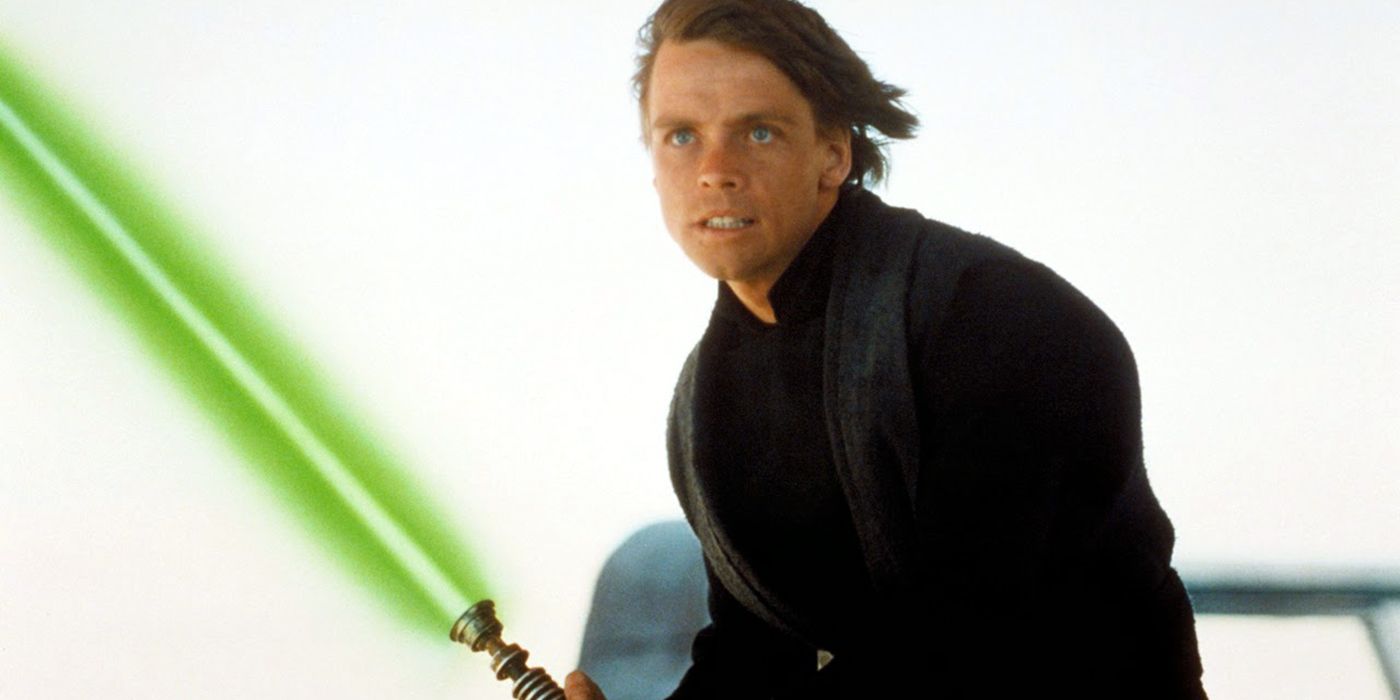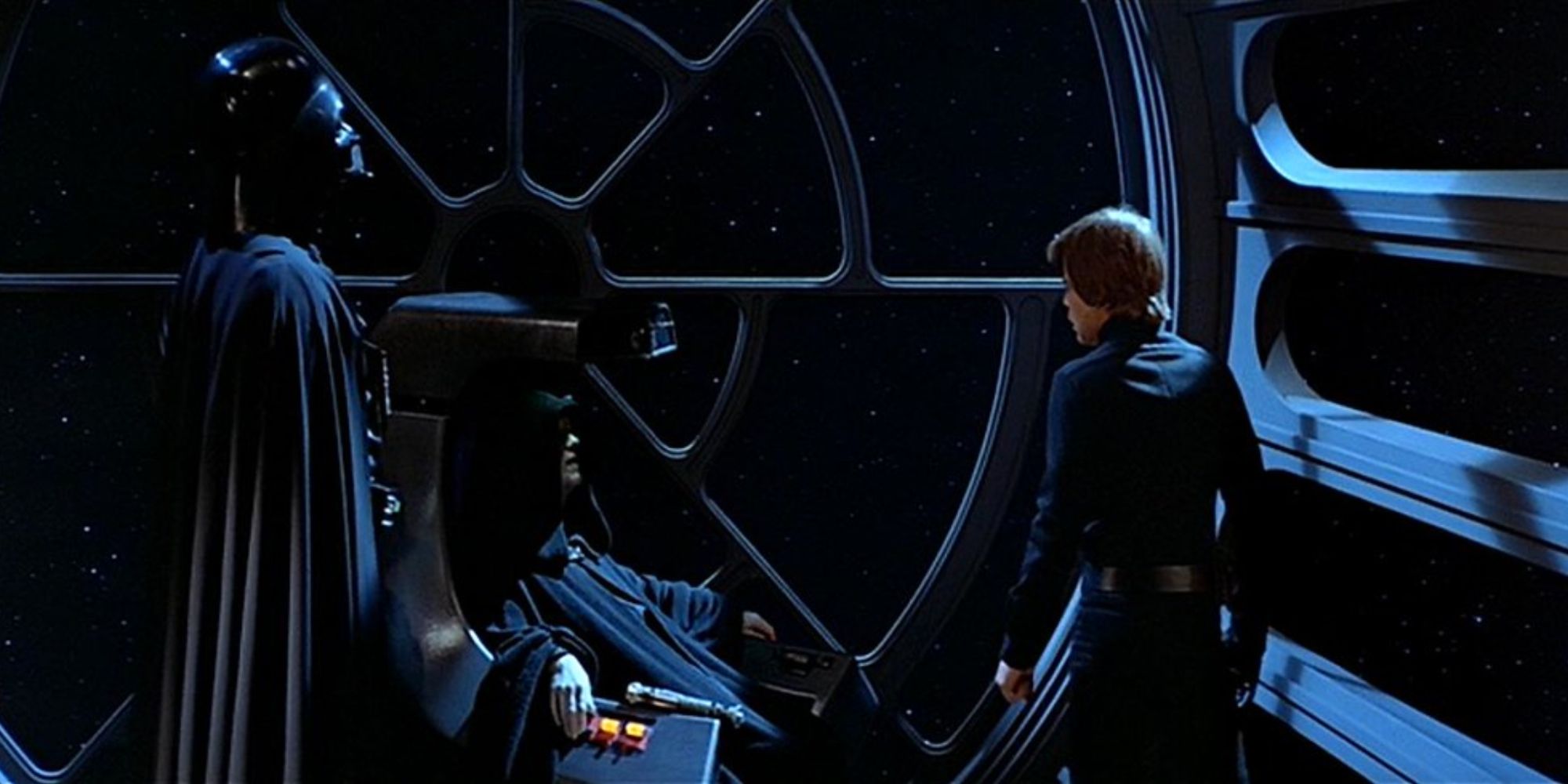In 2023, the classic film Return of the Jedi turns 40, and the end of the first Star Wars trilogy is still more revolutionary than overthrowing a despotic Empire. After beating the dreaded villain Darth Vader in a lightsaber battle, Luke Skywalker does not kill him, nor does he kill the Emperor. Since Disney purchased Lucasfilm, Return of the Jedi is part of the beloved George Lucas Star Wars hexalogy. Yet, from 1983-1999, it was the first time that the franchise failed to live up to the hype of its older fans.
Once the prequels hit, fans reorganized their feelings about this movie. Before any phantoms menaced anyone, Return of the Jedi was "the worst Star Wars film." Hate for the Ewoks gets the most attention, referenced in TV shows like How I Met Your Mother and Lost. Boba Fett going out like a punk in Luke's convoluted rescue plan was a close second. But, at release, one of the most controversial moments was when Luke tossed away his lightsaber and told the Emperor he was a Jedi Knight, like his father before him. In action movies, in the 1980s especially, the good guy killed the bad guy. That's just how it was.
Star Wars Helped Create the Action Blockbuster - But It Broke All the Rules
When it comes to the "first blockbuster" film, Steven Spielberg's Jaws holds that title. In fact, the blockbuster action movie didn't really reach its zenith until Die Hard, and the Bruce Willis breakout film came out five years after Return of the Jedi. Still, Lucas' Star Wars showed Hollywood how big things could get. To audiences, these films weren't some big cinematic philosophical statement on the nature of good and evil -- they were fun fantasy space romps kids loved for the goofy creatures and lightsabers. That's why even kids took personal offense when Luke tossed his weapon away.
The cinema of the late 1970s was tonally bleak. Star Wars and movies like Richard Donner's Superman were outliers for the time. Still, even in Disney cartoons, the goodie kills the baddie in the end. In fact, some cinematic action heroes of the time, like Clint Eastwood's Dirty Harry, were heroes because they killed so many people. Lucas seeded his philosophy into the earlier films, mostly as subtext. The Jedi Masters Luke learns from tell him Jedi use the Force for defense. They don't seek out battle, nor is there any glory to be found in it. Luke's rejection of violence after cutting off his father's hand should not have been a surprise.
Even though it seemed like the Emperor's plan was to die at Luke's hand, audiences still didn't understand why it couldn't be Luke who killed him. Sure, Lucas cheated by having Vader's last act, Anakin's first in decades, be killing his old boss. Yet, he didn't just kill him because the pay was lousy. He wasn't killing the Emperor -- he was saving his son. If Lucas had his way, Luke Skywalker might have never ignited his blade again.
Return of the Jedi Underscores How George Lucas Sees 'Good Violence'
Like Worf in Star Trek: Picard Season 3, Jedi are not pacifists. They just prefer not to use violence and try to avoid killing when they do. However, in order to save another's life? They can swing that lightsaber freely and sleep like a baby Yoda after. A subtextual explainer for this philosophy is found in another Return of the Jedi sequence fans like to goof on: Luke's plan to rescue Han from Jabba's Palace. It is convoluted, but not to show that Luke is still learning or not fully a Jedi. It's the opposite. Yes, Luke does end up killing everyone. Lucas did want audiences to see what a Jedi was capable of. But it goes beyond diving board backflips and lightsaber mastery.
Luke sent Lando, the droids, Chewie and Leia into the palace first in the hopes that Han could simply get smuggled out. Multiple attempts were made before Luke arrived. He warned Jabba what he was going to do, and the old slug didn't buy it. And that was for the best because the movie would've been short a massive action sequence. Still, Lucas baked in the idea of the Jedi being reticent to use violence from the beginning. Beyond being less clumsy and random than a blaster, a lightsaber is equally a defensive weapon. Lucas even changed the title from Revenge of the Jedi because he realized (too late, arguably) that Jedi don't take revenge. This moral hesitation is why the older kids at the time always gravitated to Han Solo.
Even in movies about comic book characters who reject killing, the hero sometimes takes out the villain. Lucas' choice for his hero to throw away his weapon instead of killing his enemies is still revolutionary. It's a little more common in films today, especially those draped in the conventions of mythology like Star Wars. But even 40 years later, Return of the Jedi flies in the face of convention. Luke Skywalker isn't much of a fighter, but when the situation calls for it, he can get down.


